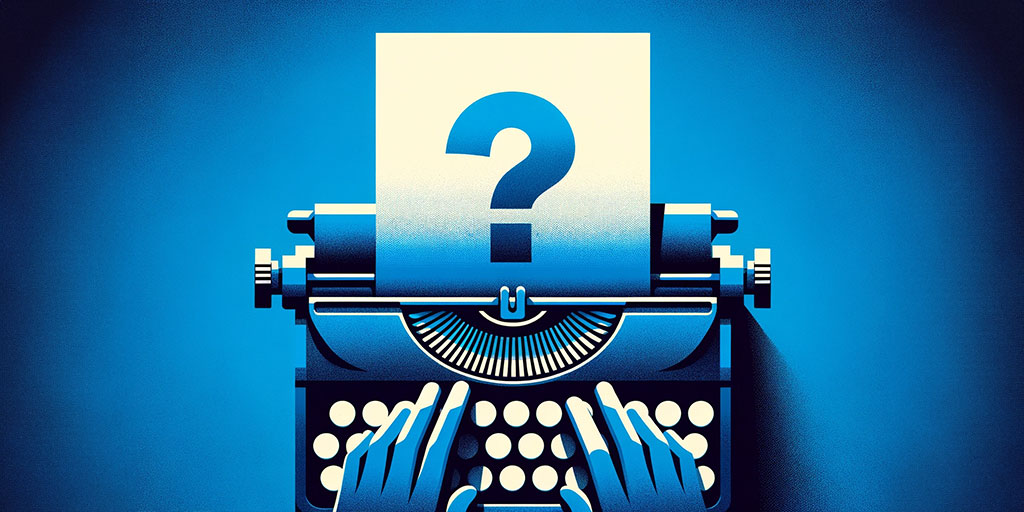The perspective you choose can have a profound impact on the way readers interact with the story, feel about the characters, and their understanding of the narrative. That’s why one of the most important elements of any story is the point of view from which it is told.
In this guide, we will help writers to craft compelling stories by exploring the power of the point of view through examples from books you are very likely to have heard of.
What is Point of View?
Point of view, or POV, refers to the perspective from which a story is told. It is the voice that the author uses to narrate the events, and is accordingly the person (though not always a character) through whom the reader experiences the story.
It doesn’t just cover the pronouns that are used to narrate, but also the narrator’s attitudes, beliefs, and biases, therefore affecting to a certain degree the reader’s perception of the characters and events.
In total, there are four points of view:
Each perspective impacts the reader’s perception of the story in different ways.
Craft of Writing Quiz (Easy)

First-Person Point of View
A story written from the first-person point of view is told from the perspective of a character in the story, using pronouns like “I”, “me”, and even “we”, if referring to themselves as part of a collective. The narrator is either the main protagonist or an important observer, and the reader experiences the events of the story through their eyes and attitudes.

There are two forms of the first-person POV: first-person central and first-person peripheral, which we will discuss in detail below.
First-Person Central
Stories with a first-person central point of view are told from the perspective of a single character who is thoroughly involved in the events of the story. This person is often the main protagonist or a significant character, and they share their deepest thoughts, feelings, and perceptions as they experience the events of the plot, creating a sense of intimacy in the reader.
Like all human beings, these characters aren’t objective and see the world through their own biases. Even worse, they may not be reliable at all and, if they have a serious psychological disorder or struggle with trauma, their description of events might be completely inaccurate. Moreover, because the story is told from one single perspective, the reader may have a limited understanding of events or characters who are not directly observed by the protagonist.
On the other hand, they are emotionally open, which helps readers to form strong emotional connections with them and to immerse themselves completely in the life, feelings, and experiences of the narrator.
First-Person Peripheral
A first-person peripheral point of view is found in stories told from the perspective of someone who is not the main protagonist, but who is still involved in, or a close observer of, the events. As such, they don’t have complete knowledge of, or control over, the plot.
The narrator can provide a unique perspective on the protagonist and the development of the story, often shedding light on aspects that the protagonist may not be aware of or providing a different interpretation of events.
This perspective can be limited by the narrator’s lack of complete knowledge or involvement in the plot, and readers may feel disconnected from the protagonist and the main action of the story. But it can create a sense of curiosity and mystery, as the reader must piece together the story through the narrator’s limited knowledge and understanding.
Why Write in First-Person?
There are many reasons why an author might choose to write in the first-person POV:
- It creates a personal connection: By sharing their thoughts, feelings, and experiences directly and openly, the reader might feel close and be able to relate to the narrator.
- It sheds light on character: By telling the story through the lens of their own inner world, the narrator can give the reader a deeper understanding of their actions and decisions.
- It evokes empathy in unsympathetic situations: When a protagonist must kill, steal, or do anything else that might be viewed negatively, the personal relationship that has already been established between them can help create empathy in the reader.
- It produces suspense and uncertainty: It is easy to create unreliable narrators that make the reader doubt the accuracy of what they are told, which creates tension and ambiguity regarding the plot and characters.
- It provides a unique perspective: Narrators with characteristics that are unusual, like a criminal or a neurodiverse individual, can create interest and intrigue in the story and make it more memorable.
- It facilitates connection with unlikeable protagonists: When a protagonist is unappealing, a peripheral first person that is fond of them can make them and their roles in the story more likable.
- It enhances engagement: Because the narrator is actively experiencing the events of the story, the reader may be more deeply immersed and feel more invested in the outcome.
First-Person Point of View Examples
To illustrate first-person POV, let’s examine some examples of books written from this perspective with reference to their central versus peripheral narration.
The Hunger Games, by Suzanne Collins
This is the prototypical book written from the first-person central perspective. The narrator, Katniss Everdeen, shares her experiences as a young girl forced to compete in a deadly game of survival against other teenagers in a dystopian fictional world.
Readers spend all their time in her head, share her emotions, see events from her POV, and receive all her justifications for doing the things she does.
While she is certainly not immoral, she does engage in a substantial amount of killing and stealing, which may have made her less likable if described from the distance of a third-person point of view.

Gone Girl, by Gillian Flynn
This thriller is told from two first-person central perspectives. The two main characters, Nick and Amy Dunne, take turns in alternating chapters to tell their different versions of the same story.
Since the plot describes a conflict between the two of them, this narrative style divides or constantly shifts the reader’s loyalty between them. Alternatively, it may make readers identify with one of them and root for them against the other, which promotes strong engagement with the story.

Sherlock Holmes Stories by Sir Arthur Conan Doyle
The narrative style in these stories probably qualify as first-person peripheral, although some literary experts argue that Dr. Watson is a central character. Whatever your opinion on his centrality, he definitely is less central than Sherlock Holmes.
Dr. Watson is Sherlock Holmes’s friend, confidant, and biographer. He witnesses Holmes’s story and disentanglement of crimes and conveys them to the reader. Although he does participate quite a lot in some of the stories, he is more often an observer than a participant.
This narrative style works well here, as Sherlock Holmes’s is aloof, analytical, egotistical, and condescending, and a story narrated by him would have made him less relatable.
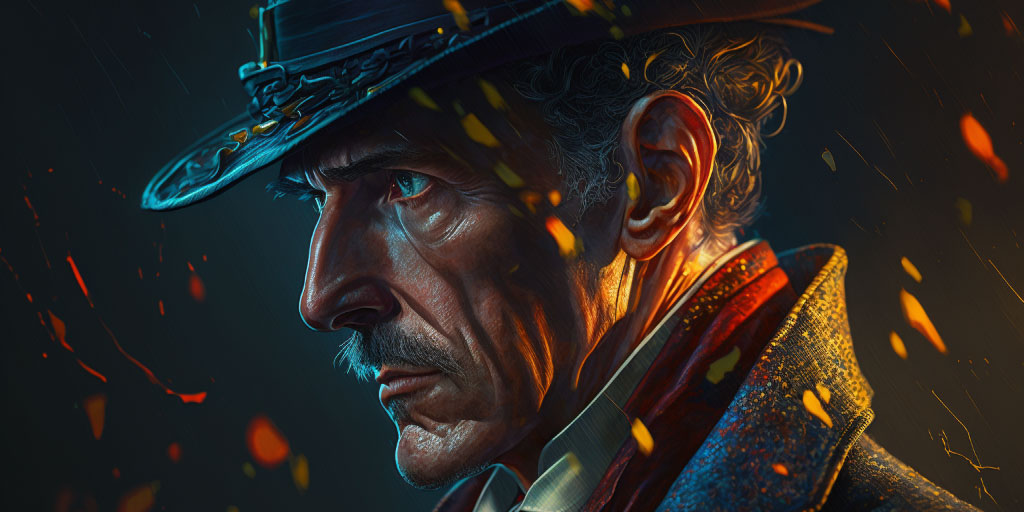
The Lovely Bones, by Alice Sebold
This is one of the most interesting cases of a first-person peripheral style, as the narrator is literally dead. After being murdered, Susie Salmon watches from the afterlife as friends and family struggle to cope with her death and move on with their lives.
At the beginning of the book, she recounts the attack on her, which makes readers feel like they’re reading a normal first-person central account. But when she is killed and her point of view continues, it creates shock, surprise, and intrigue.
Her emotions are still central to the story, as readers watch her try to deal with being dead, whilst life essentially continues without her.

Second-Person Point of View
Second-person point of view is a style that uses the pronoun “you” to address the reader. The implication is that the reader is a character in the story and that events are happening to them.It’s uncommon in fiction and is mostly found in instruction manuals and self-help books.
The reader becomes an active participant in the story, as if they are experiencing the events directly. This can create a strong sense of immediacy and intimacy, drawing the reader in and immersing them in the narrative. But since, in reality, the reader is not a character in the story, it can quickly become unrealistic and awkward.

Why Write in Second-Person?
These are some of the reasons why an author might choose to write in the second-person POV:
- It creates a sense of involvement: It allows the reader to feel like they are experiencing the events of the story first-hand. The reader may become more engrossed in the story as a result, and experience a sense of excitement and suspense.
- It turns readers into characters: When the author uses the pronoun “you” to address readers, it creates the illusion that they are characters in the story and draws them into the narrative, creating a more immersive reading experience.
- It intensifies emotions: By speaking directly to the reader, the author can foster a stronger emotional bond between the reader and the story. This works particularly well in stories that deal with difficult or sentimental themes.
- It prompts readers to reflect: The author can make remarks or ask questions directly to the reader that cause them to reflect on their own attitudes and emotions.
- It challenges traditional form: It can help writers break out from conventional narrative frameworks and produce something original and experimental because it is less prevalent than other narrative styles.
Second-Person Point of View Examples
While it is an unusual form of narration, there are many examples to illustrate how it works.
You, by Caroline Kepnes
This is a disturbing thriller that is written from the perspective of a first-person stalker and directly addressed to a second-person, making it a combination of first-person and second-person narration.
Joe Goldberg, the narrator, works in a New York bookstore where he becomes deeply obsessed with a female customer. He monitors her communication and social media posts, follows her around, slowly integrates himself into her life, and gradually takes control of everything she does.
Since he addresses her as “you”, readers experience a terrifying sense of vulnerability, danger, ensnarement, and loss of control.

The Reluctant Fundamentalist, by Mohsin Hamid
In a café in Lahore, a Pakistani man called Changez tells his life story to an American stranger, whom he addresses as “you”. As such, it’s another first-person–second-person blend.
He tells of his ideal life, living the American dream: at the top of his class at Princeton, a great job, a budding romance with an American beauty, and his passion for New York. Up to that point, the second-person perspective does not serve much of a purpose.
But when he discovers discrimination and violence against Muslims before and after September 11th, his sympathies change and he becomes an outspoken critic of “American imperialism”. Through readers’ strong connection with Changez, as established by being addressed directly by him, they remain engaged long after they would otherwise have torn up the book.

Third-Person Point of View
A story written from the third-person point of view is told by an outside narrator who is not a character in the story. This narrator observes the actions and thoughts of the characters, but does not participate in them. The third-person POV is the most common narrative perspective used in fiction.
Unlike first-person POV, which is limited to the perspective of one or two characters, the third-person POV can incorporate the perspectives of as many characters as the outside narrator can observe.
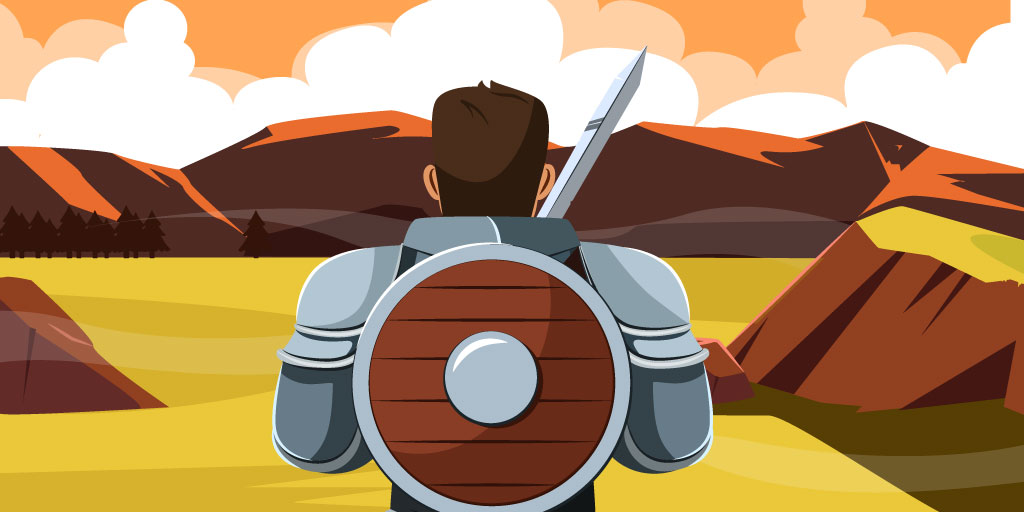
Because the third-person narrator is not a character in the story, they can provide an objective and impartial perspective on events. But at the same time, this can create a sense of distance between the reader and the characters, as the reader is not enjoying the first-hand description of the characters’ experiences throughout the story, but a washed out version of them.
There are three different types of third-person POV which will be discussed in detail below.
Third-Person Limited
A story told from the perspective of a single character, but like with other third-person narratives, the narrator is an outside observer who is not part of the story. Just the main character’s thoughts and feelings are revealed to the reader; while other characters’ thoughts and feelings remain a mystery.
Due to the reader’s ability to see the story through the eyes of the main character, the third-person limited POV can foster an intense sense of intimacy and empathy, and thereby emotional resonance.
Nevertheless, the reader might not fully comprehend the events and other characters’ motivations as they can only witness the story from the perspective of one character. This may give the story a sense of ambiguity or uncertainty.
Third-Person Omniscient
The narrator of the story is an outsider who has access to all of the characters’ thoughts and emotions. It enables the reader to view the story’s events from a variety of angles, which can lead to a broader and more complex knowledge of the characters and their motivations. By freely switching between persons and settings, the narrator can provide the reader a bird’s-eye view of the action.
Because the reader can comprehend every character’s motivations and actions in greater detail, the plot may become clearer and deeper as a result, and the reader may find it simpler to relate to the characters and their challenges.
It might be difficult to develop a strong sense of intimacy with any one character, though, because the narrator has access to all of the characters’ thoughts and feelings. Also, if not handled carefully, the reader may find the frequent switches in perspective disorienting.
Third-Person Objective
Here, a third-party narrator tells the story without revealing any of the characters’ thoughts or emotions. The reader is left to infer the characters’ feelings and objectives from the narrator’s objective descriptions of their actions and dialogue.
This can create a sense of mystery or ambiguity in the story. Because the reader is not privy to the characters’ thoughts and feelings, they must rely on clues from the characters’ actions and dialogue to infer their motivations and emotions. This can create a sense of tension and intrigue, and can make the story feel more complex and layered.
However, it can be challenging to develop a strong sense of empathy or an emotional connection with the characters, because their minds aren’t known to the reader. For that reason, it is very rare in full-length novels.
Why Write in Third-Person?
There are several reasons why a writer may choose to write fiction from a third-person point of view. Here are some of the most common ones:
- It creates objectivity: Because there is greater distance between the reader and the characters, this point of view allows a more objective perspective and a broader understanding of the story’s world.
- It gives access to difficult characters: The narrator can provide insights into the minds of characters that would be difficult to achieve in the first-person, like those who lack self-awareness.
- It facilitates the complexity of multiple perspectives: It allows a writer to switch between many perspectives, creating a complex story with several characters and drawing a contrast or conflict between different persons.
- It involves a reliable narrator: While first-person narrators are often unreliable because they are biased or lack information, the third-person point of view can create a more reliable perspective on the story.
- It allows identification with multiple characters: Because readers identify with multiple characters, it can create a more immersive and engaging reading experience, as the reader lives the experiences of multiple people around the same event.
Third-Person Point of View Examples
As the overwhelming majority of fictional stories are written from this POV, there are endless examples. Let’s look at a few.
Harry Potter series, by J.K. Rowling
This is the most popular recent example of a third-person limited narration.
The story is told by an outside narrator, but from the point of view of Harry Potter, a young wizard attending Hogwarts School of Witchcraft and Wizardry. The narrator focuses on Harry’s thoughts and feelings, but does not reveal the thoughts or feelings of other characters, except for a few select scenes.
Readers are given access to Harry’s mind but, like Harry himself, they remain unsure about what the other characters are thinking.

Dune, by Frank Herbert
This science fiction novel is primarily written in the third-person omniscient POV.
Main protagonist Paul Atreides, his mother Lady Jessica, his tutor Gurney Halleck, and some of his adversaries, like Baron Harkonnen, are only a few of the minds and personalities that the outside narrator can access. This enables the reader to view the world of the novel from many angles and obtain a deeper comprehension of the reasons behind the characters’ behaviors.

Hills Like White Elephants, by Ernest Hemingway
This is a short story that is written from the third-person objective POV.
The whole story involves a man and woman sitting at a train station and talking about an abortion that he wants her to have, but of which she is uncertain and afraid.
Notwithstanding this deep plot line and the complex issues that it explores, the narrator never describes the thoughts or emotions of the characters. It is only the couple’s dialogue that reveals their complex relationship and differing perspectives on their situation.

Fourth-Person Point of View
The fourth-person is a modern viewpoint that has just lately emerged as different from the third-person perspective.
It involves stories that are narrated from the POV of a group as opposed to an individual, with the use of the pronouns “we” and “us”. Whenever it has to refer to a singular person in the group, it uses “one”, “someone”, and “anyone”.
It works well to analyze groups, institutions and societal norms, because the story that needs to be told in these cases is a collective rather than a singular one, but it does make it difficult for readers to identify with characters. It is the least common of all the narration styles.
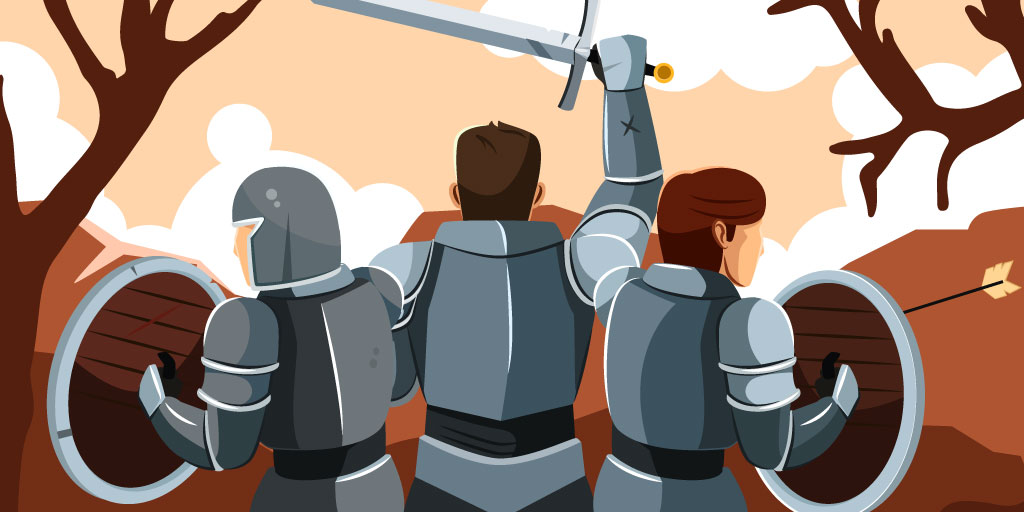
Why Write in Fourth-Person?
Most stories don’t fit well with this narration style, as they don’t involve collective observers. So, it is usually not the most recommended point of view when writing a new story. But there are some reasons for picking it.
- It enables the telling of unusual stories: It makes it possible to tell collective stories that don’t have singular characters.
- It removes multiple-character chaos: Unlike the confusion that can be created with too many characters in third-person stories, a fourth-person narrative can include lots of individual people that come and go.
- It is unique: It is so unusual that it might attract attention to your story.
Fourth-Person Point of View Examples
Very few novels have made use of this POV, but there are a few examples.
Weightless, by Sarah Bannan
Written in the first-person plural, this novel describes events from the perspective of a high school clique.
It does contain individual characters, like Carolyn who moves to the school, Shane who almost becomes her boyfriend, and Brooke who is actually Shane’s girlfriend, but the story about bullying is told from the point of view of the collective. In fact, the collective even seems to change from the clique to the whole community during the course of the book.
Most interestingly, readers can include themselves in the community, as we all understand the freaky goths, the boring nerds, the catty princesses, and the boastful jocks that make up a high school community.

The Virgin Suicides, by Jeffrey Eugenides
This novel tells the story of the Lisbon family, consisting of Mr. and Mrs. Lisbon and their five daughters. The story is narrated by a group of anonymous boys who are fascinated by the Lisbon girls.
As the family becomes more reclusive and the girls start killing themselves one by one, the boys become more and more obsessed with them, trying to find ways to interact with them. However, they are always rebuffed by the girls’ parents.
The novel ends with the boys’ attempt to put together the girls’ lives and causes of their suicides.
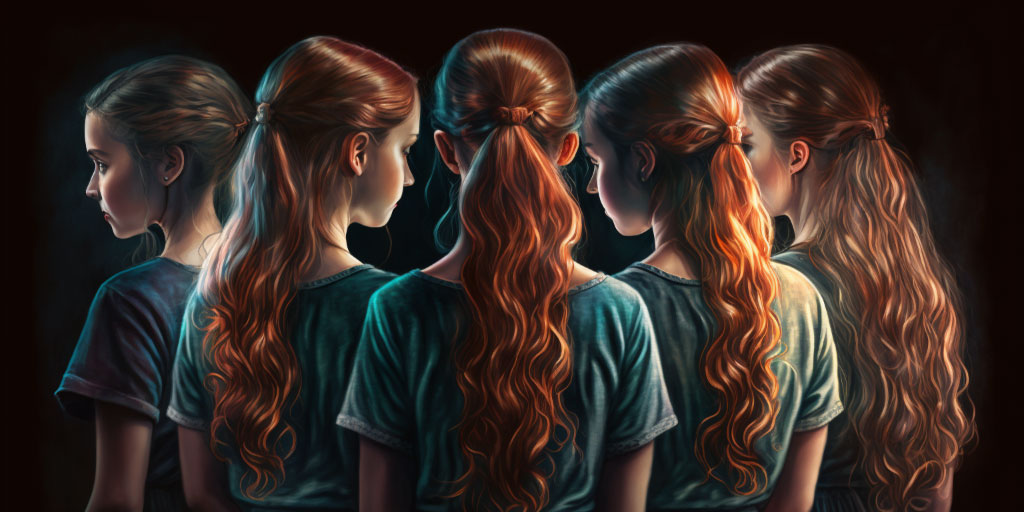
How to Choose a Point of View
Choosing the right POV is an important decision for any writer, as it can greatly impact the reader’s experience and understanding of the story. Here are some considerations for choosing your POV:

The Genre of the Story
Generally speaking, different genres may lend themselves better to certain points of view.
For example, first-person POV is often used in memoirs and autobiographies, where third-person would be too distant, and third-person POV is used in most popular novels where second- or fourth-person may be too experimental for the majority of readers.
Do your research by reading in the same genre as yours.
The Tone of the Story
Think of the tone you want your story to convey. For a sense of intimacy and immediacy between the reader and the story, pick the second-person style. For authenticity and emotional depth, a first-person narrative is ideal. To create a bit of distance and objectivity, go with third-person.
The Scope of the Story
Decide on the breadth of the story you want to convey. If you want to tell a single character’s story, first-person POV is quite sufficient. If you want to tell a broader story that encompasses multiple characters or perspectives, third-person POV is more suitable.
Information Revealed
Decide how much information you want to reveal to the reader during the course of the story. First-person POV can be effective in creating a sense of mystery or suspense, as the reader only has access to the narrator’s perspective. Third-person POV can be used to reveal more information about multiple characters or events.
Your Purpose or Message
Consider whether there is a message you want to convey. While you can use third-person POV to express a more global or objective message, first-person POV can be successful in communicating a personal or emotional message. The reader’s presumptions or preconceptions can be questioned using the second-person POV.
Closeness with the Characters
First-person POV creates the strongest emotional connection between the reader and the narrator, followed by second-person, third-person limited, and then third-person omniscient.
Decide whether your story will benefit from an extremely strong or slightly distant connection between narrator and readers, and pick your POV accordingly. For example, in stories that deal with severe graphically described abuse, a bit of distance might protect your readers from trauma.
Can You Switch the Point of View?
Skilled writers do switch the point of view during a novel, and it can be a potent strategy for delivering a story from several angles or for establishing contrast or tension between various characters. But you must do it clearly and honestly. Using it as a method to deceive readers will make them feel cheated or confused. It should serve the story and its purpose. It shouldn’t just be a showy gimmick.

Use clear transitions to signal the change. This can be done through chapter or section breaks. There are two types of POV changes that it is not advisable to make:
- It is advisable not to switch between first-, second-, third-, and fourth-person points of view, for that would be unnecessarily confusing.
- You should also not start with a third person that is limited and then suddenly give them full omniscience.
Aside from this, it is fairly common for points of view to change inside a third-person or first-person story. For example, The Girl on the Train, by Paula Hawkins, is narrated by three different female third persons, each with her own perspective on the events that unfold. Another example is Gone Girl, by Gillian Flynn, in which two first-persons take turns to tell their version of the story.
Common Point of View Mistakes
It is important to use point of view deliberately, consistently, and with consideration for the plot and the reader’s experience. Here are some common mistakes that you should avoid making in your stories.
Inconsistent Point of View
With the exception of multiple narrators inside a first-person-only story, and multiple perspectives inside a third-person-only story, it is usually a bad idea to switch POV. Pick one at the beginning of your story and stick to it. Switching between first-, second-, and third-person POV is confusing, and changing a limited third-person into an omniscient one is a cheat.
Head-Hopping
When writing in third-person omniscient, and possibly also in second-person, it might be tempting to hop between different characters’ perspectives in the same scene. After all, as the narrator, you as author have access to all their heads, so why not switch?
It is confusing for readers because they don’t know which character’s perspective they’re following. It also disrupts the flow of the narrative and lessens the emotional impact if readers have to concentrate on knowing which head they are in.
Using the Wrong Point of View
Some stories may be better served by a different POV than the one the author has chosen. For example, a story with a lot of internal dialogue requires first-person, while multiple characters and subplots require third-person. Further, some characters won’t make good first persons, such as Sherlock Holmes, while particularly interesting characters may be better first than third persons.
Unclear Reliability of Narrator
An unreliable narrator is a great way to create mystery, but it’s important to make it clear to the reader that the narrator is untrustworthy. If the reader is unsure whether they are telling the truth, it can be frustrating or confusing.
Too Many Points of View
In both third-person styles, authors may fall into the trap of describing events from too many different perspectives just because they can. But too many points of view require a lot of concentration from your readers and constant POV shifts are confusing. Limiting the POV characters produces a more immersive, more cohesive story.
The Wrong Voice
A child should speak and think like a child, and an adult should have a mature perspective and vocabulary. This is especially important when writing from the first-person point of view, which means that authors must immerse themselves in the lives of the characters they want to use as the first-person voice.
The Omniscient First-Person Perspective
Authors might suddenly realize that the first-person POV is limiting, since there are things that they need readers to know that the narrator doesn’t know. Slipping knowledge into your first-person narrators that they cannot possess is a cheat. A first-person narrator cannot be omniscient. They don’t know what other people are thinking, and they can’t describe events they have not witnessed.
First-Person Self-Descriptions
A first-person narrator cannot say things like, “I looked up at him with tears in my emerald green eyes” or “I stood tall and slender, my hair a rich shade of red, and my eyes sparkling with intelligence and humor.” Third persons might describe your protagonist like this, but people don’t think of themselves in this way while they’re in a sad or confrontational scene.
Final Thoughts
The purpose of first-person point of view is to create an intimate connection between the reader and the narrator, allowing the reader to experience the story through the narrator’s perspective.
Second-person point of view is used to directly address the reader and create a sense of immediacy and engagement.
Third-person point of view is often used for a more objective and distant perspective, providing a comprehensive view of the story and its characters.
An understanding of the power of point of view can help writers unlock new possibilities for their storytelling and create works of fiction that resonate with readers long after they have finished the last page.
Craft of Writing Quiz (Hard)
